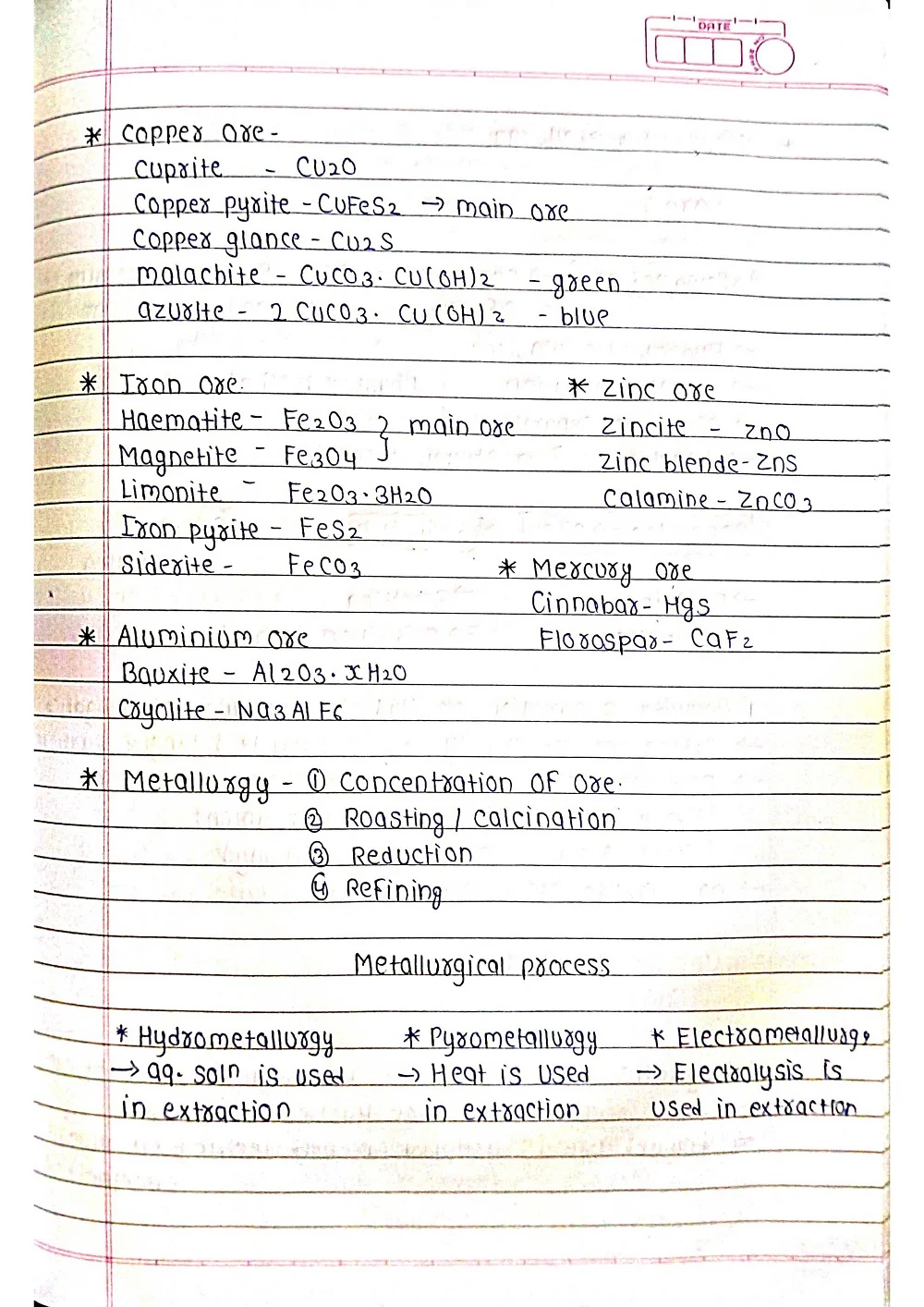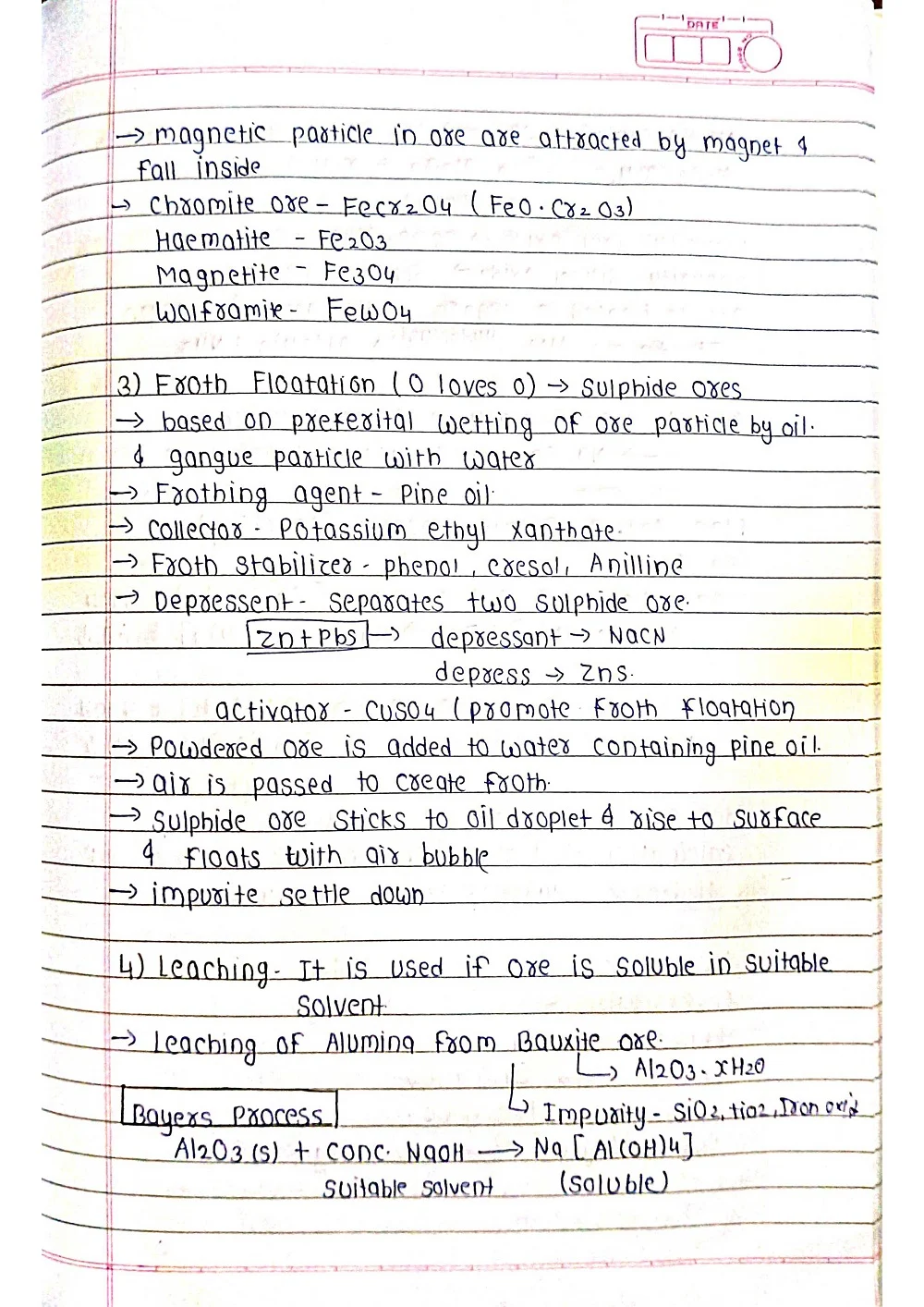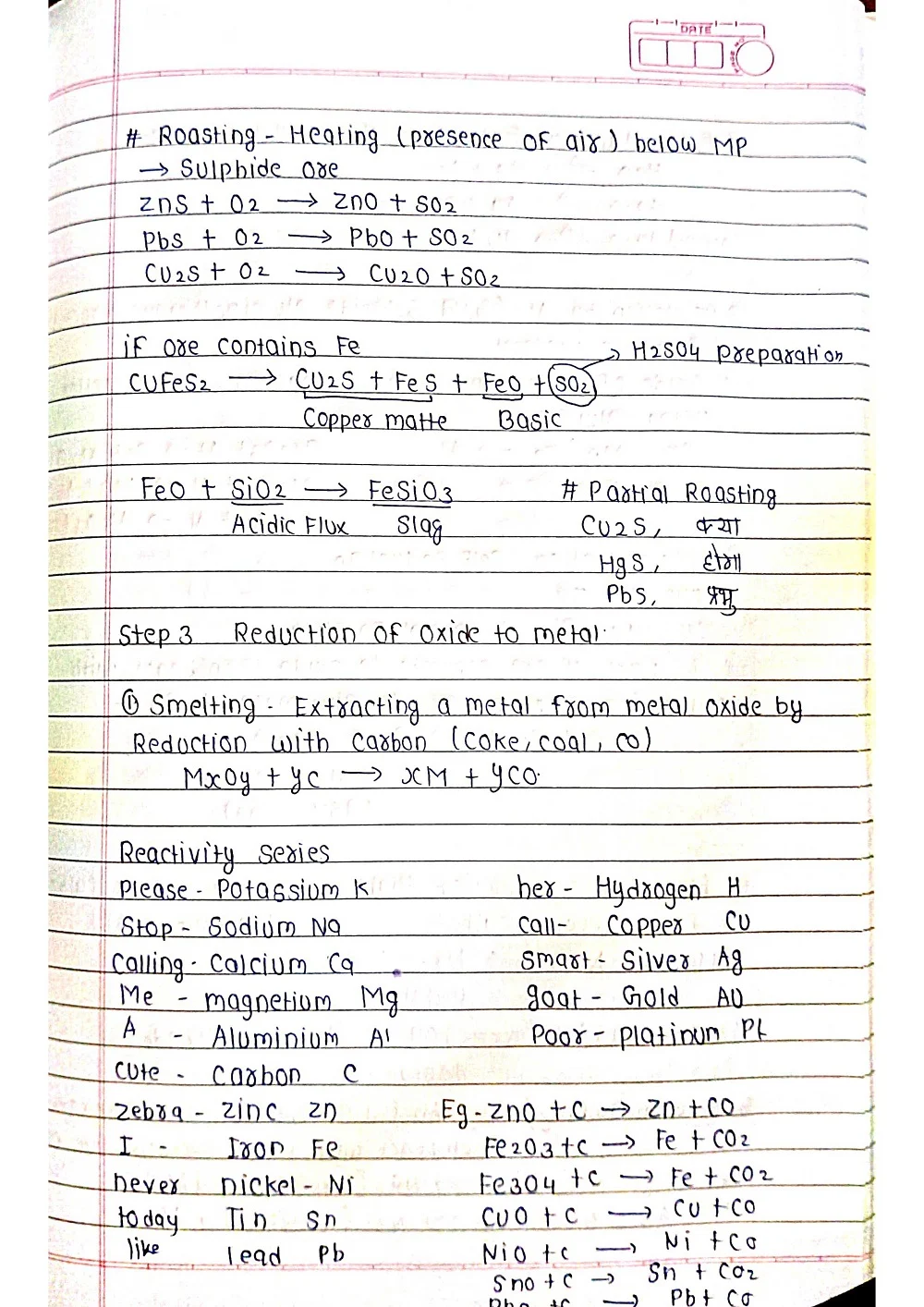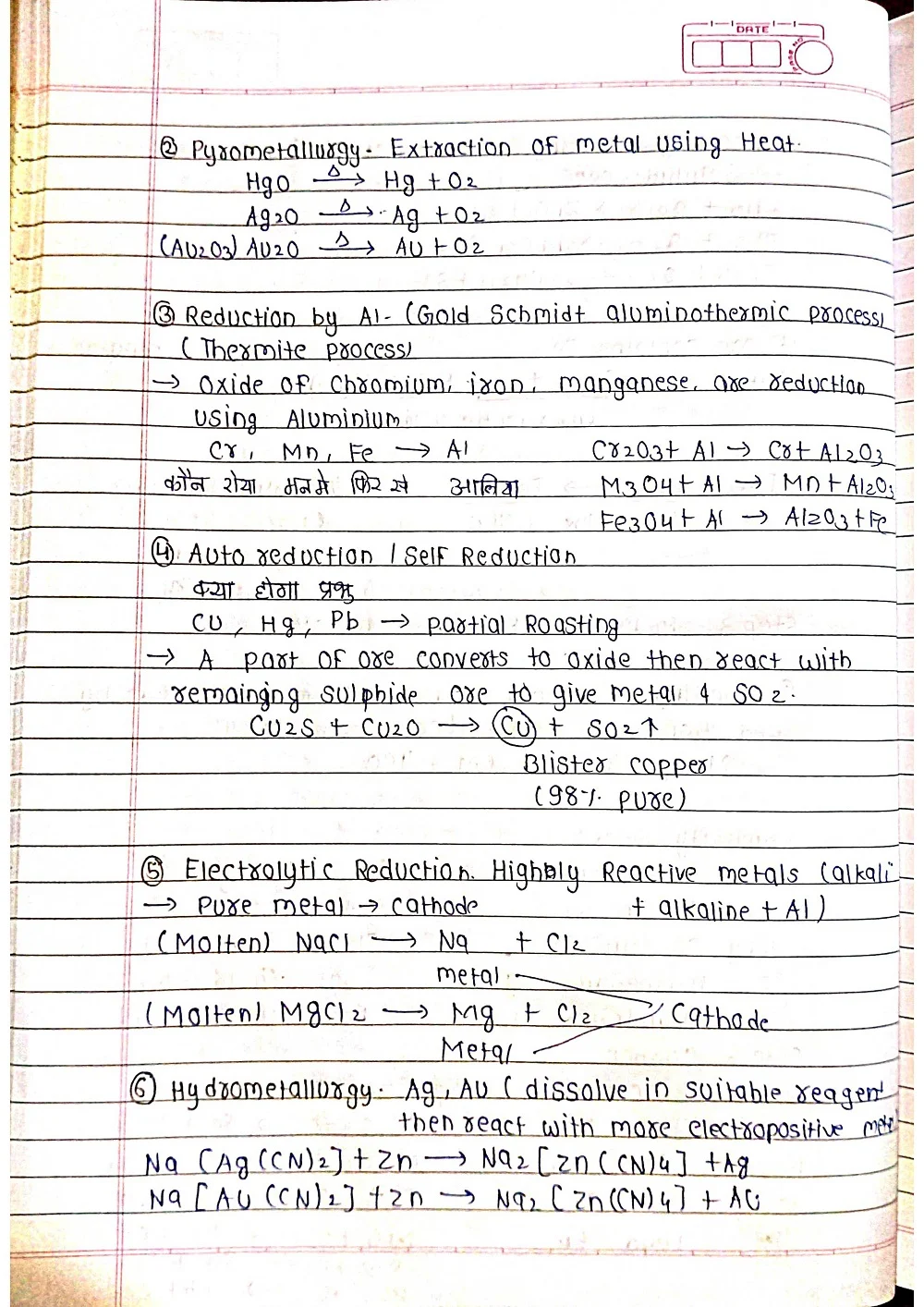Introduction
Metallurgy is the science and technology of extracting metals from their ores, refining them, and alloying them to create useful materials.
Ores
An ore is a naturally occurring mineral that contains a metal in a form that can be extracted economically.
Minerals
A mineral is a naturally occurring, inorganic, solid substance with a definite chemical composition and a characteristic crystal structure.
Types of ores
There are four main types of ores:
➡️ Oxide ores: These ores contain the metal in the form of an oxide, such as hematite (Fe2O3) and magnetite (Fe3O4).
➡️ Sulfide ores: These ores contain the metal in the form of a sulfide, such as galena (PbS) and chalcopyrite (CuFeS2).
➡️ Carbonate ores: These ores contain the metal in the form of a carbonate, such as siderite (FeCO3) and malachite (CuCO3).
➡️ Native metals: These metals occur in their free state, such as gold, silver, and copper.
Concentration of ores
Concentration of ores is the process of removing unwanted materials from the ore, such as gangue minerals and moisture. This is done by a variety of methods, including crushing, grinding, and flotation.
Extraction of metals from ores
The extraction of metals from ores involves a number of steps, including:
➭ Conversion of the ore to an oxide: This is done by roasting or calcination.
➭ Reduction of the oxide to the metal: This is done by smelting or electrolysis.
➭ Refining of the metal: This is done by a variety of methods, such as electrorefining and fire refining.
Alloys
An alloy is a mixture of two or more metals. Alloys are often stronger, harder, and more corrosion-resistant than pure metals.
Some common alloys
➭ Steel: An alloy of iron and carbon.
➭ Brass: An alloy of copper and zinc.
➭ Bronze: An alloy of copper and tin.


















